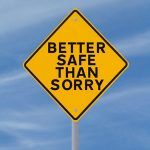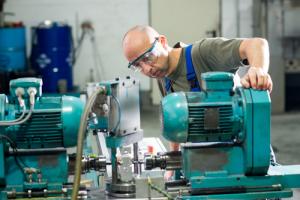
Safety Myths & Facts: Making Your Workplace Safer

Most anyone would agree that an effective safety program is something all businesses should strive for, regardless of size, location, corporate structure, or type of business. People often have their own thoughts on how an effective safety program should be established, and there is never a shortage of opinions on what is right or wrong with a given approach. In this edition of the Advanced Safety & Consulting blog we will examine – and debunk – some myths about safety in the workplace.
Myth 1 – Safety costs money
It’s true: An effective safety program does cost money. There are up-front costs in developing and documenting processes and procedures, training employees (both shop floor and management employees), and possibly even making equipment and engineering changes to enhance safety. But in the long run, safety saves money – and it’s the right thing to do. In other words: Safety is a Win-Win.
Consider the costs of not having an effective safety program, and a resulting accident. Think of the potential medical costs, and personal injury liabilities. Think of the cost of investigation and audit, and the extra attention from corporate and the public that an accident may bring. Think of a Chief Prevention Officer or OSHA investigation, and the potential for big fines from them.
Myth 2 – Accidents happen; employees are just careless
It’s easy to assign an accident to “employee error,” “carelessness,” or “not paying attention.” “Accidents happen” is a very dangerous mantra; in reality, most accidents are the result of a specific action or inaction, and stem largely from unsafe practices that could have been identified and altered.
A good safety program should consist of regular, unbiased task observations, looking for things that could lead to an accident. Taking a behavioral-based approach, and changing behaviors that could lead to an accident, is an effective counterpoint to “accidents happen.”
Myth 3 – Safety is a separate function

Keeping Safety as a separate function is an especially dangerous assumption, most prevalent in those organizations that have a separate safety organization. Here, you will see evidence of people walking around the site, not paying attention to work activities around them. If asked why they didn’t see and stop an unsafe activity, you could very well hear the old adage “not my job.”
An effective safety program must develop a culture where it is recognized that safety is everyone’s job – from the executive in charge to the night janitor sweeping the floors. Each employee must not only take responsibility for his or her own safety, but also for everyone else on the team. This philosophy is enforced by visible management support, including inspections, audits, and observations. The safety program must be pervasive in all site operations, not just in the safety department.
Myth 4 – Safety incentives create change
Yes, they do create change, in the short term. Knowing you get a bonus, or a gift, or some other incentive which is meant to keep safety in the forefront will help keep employee focus and recognition on safety aspects.
However, in the long run, that focus will turn away from safety and become a focus on the measurements that drive those incentives. As an example, an incentive is established to reduce first aid injuries month on month. Initially, this will increase focus, and may even drive down the number of incidents. But, is that reduction in incidents over time a function of improved safety, or a function of not reporting an incident so the goal can be achieved?
Conclusion
There are many commonly accepted assumptions about safety programs and safety performances out there. Some may maintain a high level of truth and accuracy, but closer investigation may reveal that their validity is indeed a myth. The final message should be to not openly accept these truisms, but to examine them in their entirety, in the context of your specific business.
When it comes to safety, Advanced Consulting & Training offers comprehensive training programs and consulting services. To find out more about how you can institute and maintain an effective safety program in your workplace, contact us today.


